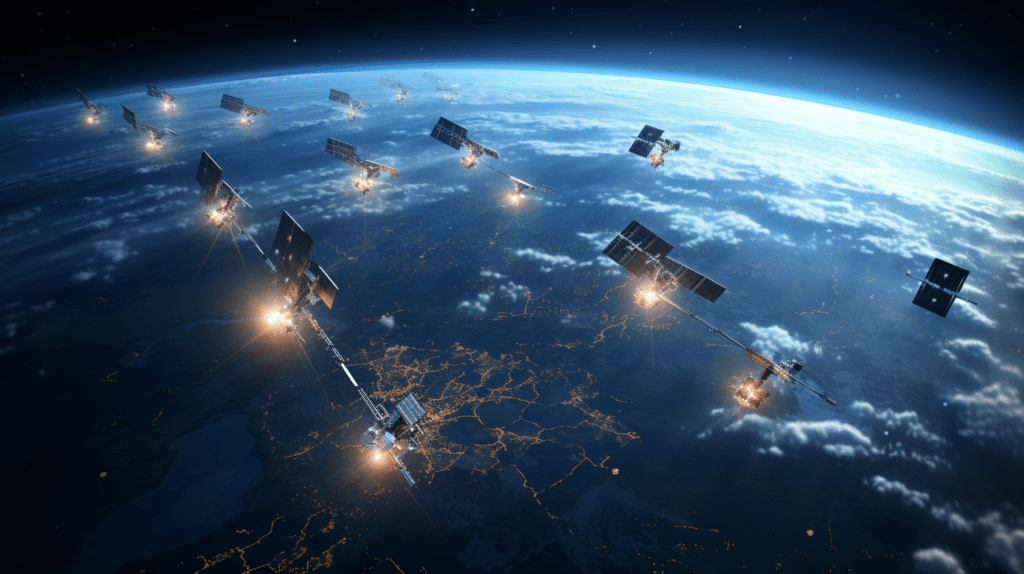Space Communications
The space communications industry has come a long way since the early days of space exploration. From the first communication satellites launched in the 1960s to the sophisticated networks of today, space communications has become an integral part of our daily lives.
At its core, the space communications industry is responsible for transmitting information between different points on Earth and in space. This includes everything from transmitting TV signals and internet data to providing vital communication links for astronauts and spacecraft.
One of the key advantages of space communications is its ability to cover vast distances quickly and efficiently. With the help of satellites and ground-based equipment, we can transmit information across the globe in a matter of seconds. This has revolutionized the way we communicate, allowing us to connect with people and places on the other side of the world as if they were right next door.
Space communications is a fascinating field that plays a vital role in connecting humanity across the cosmos. As technology advances, our ability to communicate across vast distances in space becomes increasingly crucial. In this article, we will explore the importance of space communications, the companies leading the way, and the incredible potential it holds for our future.
The Significance of Space Communications
Exploration and Research:
Space communications facilitate the transmission of valuable scientific data gathered from space missions, aiding in our understanding of the universe and beyond.
Satellite Operations: Satellite operators rely on space communications to manage and control satellites in orbit, ensuring their proper functioning and the delivery of essential services like weather forecasting, navigation, and telecommunications.
Astronaut Connectivity: During space missions, astronauts rely on reliable and secure communication systems to stay connected with mission control and their loved ones on Earth, enhancing safety and morale.
Interplanetary Missions: Communication networks enable us to send commands and receive data from spacecraft exploring other planets, moons, and even asteroids, expanding our knowledge of the solar system.
Leading Companies in Orbital Satellite Technology
companies operating in different satellite orbits, along with their URLs and a short fact about each of them:
| Orbit | Company | URL | Short Fact |
|---|---|---|---|
| Geostationary | Intelsat | www.intelsat.com | Intelsat operates the world’s largest satellite network, providing global connectivity solutions. |
| Geostationary | SES | www.ses.com | SES is a global satellite operator with a fleet of geostationary satellites, offering communication services worldwide. |
| Geostationary | Eutelsat | www.eutelsat.com | Eutelsat delivers video, data, and broadband services through its geostationary satellite fleet. |
| Geostationary | Telesat | www.telesat.com | Telesat provides reliable satellite communications solutions and has a long history in the industry. |
| Geostationary | Inmarsat | www.inmarsat.com | Inmarsat offers mobile satellite communications for land, maritime, and aviation industries globally. |
| Medium Earth Orbit | Iridium | www.iridium.com | Iridium operates a constellation of LEO satellites, enabling global voice and data communications. |
| Medium Earth Orbit | Globalstar | www.globalstar.com | Globalstar provides mobile satellite voice and data services, connecting people and assets around the world. |
| Medium Earth Orbit | O3b (SES subsidiary) | www.o3bnetworks.com | O3b offers high-speed, low-latency connectivity through a constellation of MEO satellites. |
| Low Earth Orbit | SpaceX (Starlink) | www.starlink.com | SpaceX’s Starlink aims to provide global broadband coverage through its large LEO satellite constellation. |
| Low Earth Orbit | OneWeb | www.oneweb.world | OneWeb is building a network of LEO satellites to deliver high-speed internet access worldwide. |
| Low Earth Orbit | Amazon (Project Kuiper) | www.kuiper.com | Amazon’s Project Kuiper plans to deploy a constellation of LEO satellites to expand broadband access. |
| Low Earth Orbit | Telesat (Lightspeed) | www.lightspeedtelesat.com | Telesat’s Lightspeed aims to provide global broadband connectivity through a constellation of LEO satellites. |
| Low Earth Orbit | Planet Labs | www.planet.com | Planet Labs operates a fleet of small satellites to capture Earth imagery and provide data for various applications. |
| Low Earth Orbit | Spire Global | www.spire.com | Spire Global deploys nanosatellites for collecting data on weather, maritime, and aviation industries. |
| Polar Orbit | NASA | www.nasa.gov | NASA conducts extensive scientific research and Earth observation missions using satellites in polar orbit. |
| Polar Orbit | European Space Agency (ESA) | www.esa.int | ESA plays a crucial role in European space activities, including Earth observation and scientific exploration. |
| Polar Orbit | NOAA | www.noaa.gov | NOAA operates weather satellites to monitor and forecast weather conditions, contributing to public safety. |
| Sun-Synchronous | Airbus Defence and Space | www.airbus.com | Airbus Defence and Space offers Earth observation solutions using satellites in sun-synchronous orbit. |
| Sun-Synchronous | Planet Labs | www.planet.com | Planet Labs operates a constellation of small satellites in sun-synchronous orbit for global Earth observation. |
| Sun-Synchronous | BlackSky | www.blacksky.com | BlackSky provides geospatial intelligence through its constellation of satellites in sun-synchronous orbit. |
Another key benefit of space communications is its reliability. Unlike traditional communication methods, such as radio or telephone, space communications are not subject to interference or distortion from weather, atmospheric conditions, or other factors. This makes it an ideal solution for critical communication applications, such as emergency response, military operations, and scientific research.

The space communications industry has also played a critical role in advancing other areas of technology. For example, the development of the Global Positioning System (GPS) was made possible by the use of satellites to provide accurate and reliable location data. Similarly, advances in satellite imaging technology have revolutionized our understanding of the Earth and its natural systems.
The future of the space communications industry is bright, with continued innovation and growth on the horizon. As we look ahead, we can expect to see new technologies and applications emerging, such as the use of small satellites for internet connectivity and the development of space-based 5G networks.
Several companies are at the forefront of space communications, pioneering new technologies and pushing the boundaries of what is possible. Here are some prominent players in the field:
SpaceX – www.spacex.com: SpaceX, founded by Elon Musk, is revolutionizing space communications with its Starlink satellite constellation. By deploying thousands of small satellites in low Earth orbit, SpaceX aims to provide global broadband coverage, connecting even the most remote corners of the world.
OneWeb – www.oneweb.world: OneWeb is another company focused on creating a satellite constellation for global internet coverage. With a mission to bridge the digital divide, OneWeb is deploying a network of low Earth orbit satellites to deliver high-speed, low-latency internet access.
SES – www.ses.com: SES is a leading satellite operator that provides reliable and secure communications services worldwide. With an extensive fleet of satellites, SES delivers a wide range of solutions, including broadcasting, data connectivity, and government communications.
Iridium Communications – www.iridium.com: Iridium operates a constellation of satellites offering global voice and data communications. Their network is known for its resilience and coverage, enabling critical communications in remote and challenging environments.
Inmarsat – www.inmarsat.com: Inmarsat provides global mobile satellite communications, catering to industries such as maritime, aviation, and government. Their network ensures seamless connectivity for users around the world, even in remote areas.





